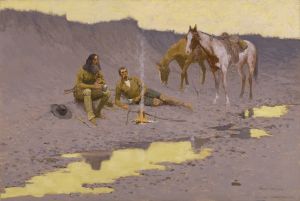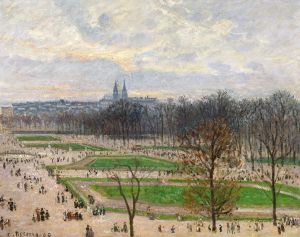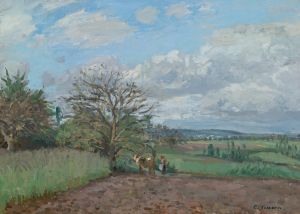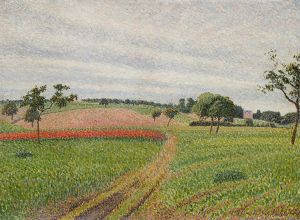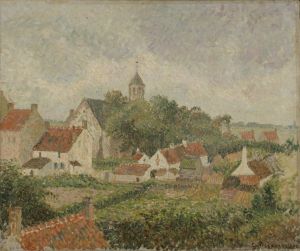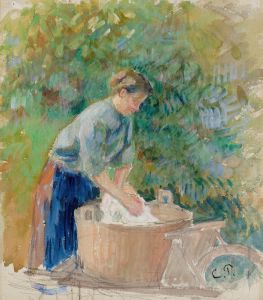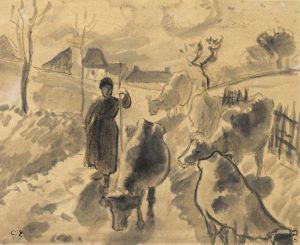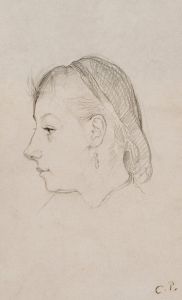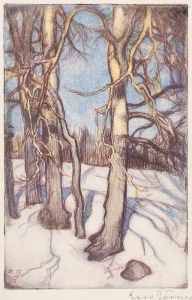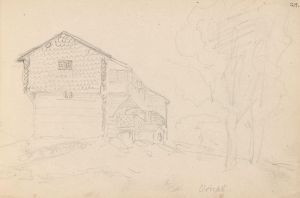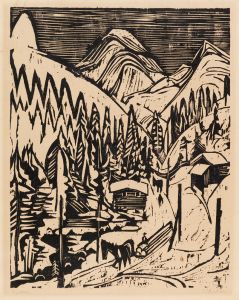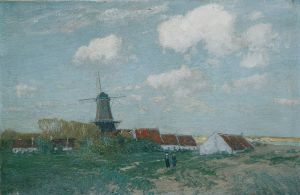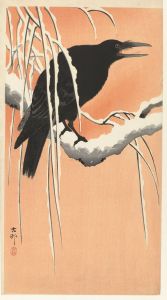
Effet De Neige À Montfoucault
A hand-painted replica of Camille Pissarro’s masterpiece Effet De Neige À Montfoucault, meticulously crafted by professional artists to capture the true essence of the original. Each piece is created with museum-quality canvas and rare mineral pigments, carefully painted by experienced artists with delicate brushstrokes and rich, layered colors to perfectly recreate the texture of the original artwork. Unlike machine-printed reproductions, this hand-painted version brings the painting to life, infused with the artist’s emotions and skill in every stroke. Whether for personal collection or home decoration, it instantly elevates the artistic atmosphere of any space.
Effet De Neige À Montfoucault is a painting by the renowned French artist Camille Pissarro, created in 1874. Pissarro, a pivotal figure in the Impressionist movement, is celebrated for his innovative approach to capturing light and atmosphere in his landscapes. This particular painting is a testament to his mastery in depicting the transient effects of light and weather, a hallmark of the Impressionist style.
The painting portrays a snow-covered landscape in Montfoucault, a rural area in France where Pissarro spent some time. The scene is imbued with a serene and tranquil atmosphere, capturing the quiet beauty of a winter's day. Pissarro's use of color and brushwork effectively conveys the cold, crisp air and the soft, diffused light typical of a snowy environment. The composition is balanced, with the snow-laden ground occupying the foreground and a line of trees receding into the background, creating a sense of depth and perspective.
Pissarro's technique in this painting reflects his commitment to plein air painting, a practice that involves painting outdoors to capture the natural light and atmosphere of a scene. This approach was central to the Impressionist movement, which sought to break away from the rigid conventions of academic art and instead focus on the immediate visual impression of a moment. In Effet De Neige À Montfoucault, Pissarro's loose, fluid brushstrokes and his subtle use of color variations effectively convey the shimmering quality of snow and the play of light across the landscape.
The painting was created during a significant period in Pissarro's career. In 1874, he participated in the first Impressionist exhibition, a landmark event that challenged the traditional art establishment and introduced the public to a new way of seeing and representing the world. Pissarro was one of the few artists to exhibit in all eight of the Impressionist exhibitions, and his work played a crucial role in defining and promoting the movement.
Effet De Neige À Montfoucault is an excellent example of Pissarro's ability to capture the essence of a scene with simplicity and directness. His focus on everyday rural life and his sensitivity to the changing effects of light and weather are evident in this work. The painting not only reflects Pissarro's artistic vision but also provides insight into the broader cultural and artistic shifts occurring in France during the late 19th century.
Today, Effet De Neige À Montfoucault is appreciated for its aesthetic qualities and its historical significance within the context of the Impressionist movement. Pissarro's work continues to be studied and admired for its innovative approach and its influence on subsequent generations of artists. His dedication to capturing the beauty of the natural world with honesty and immediacy remains a defining characteristic of his legacy.





